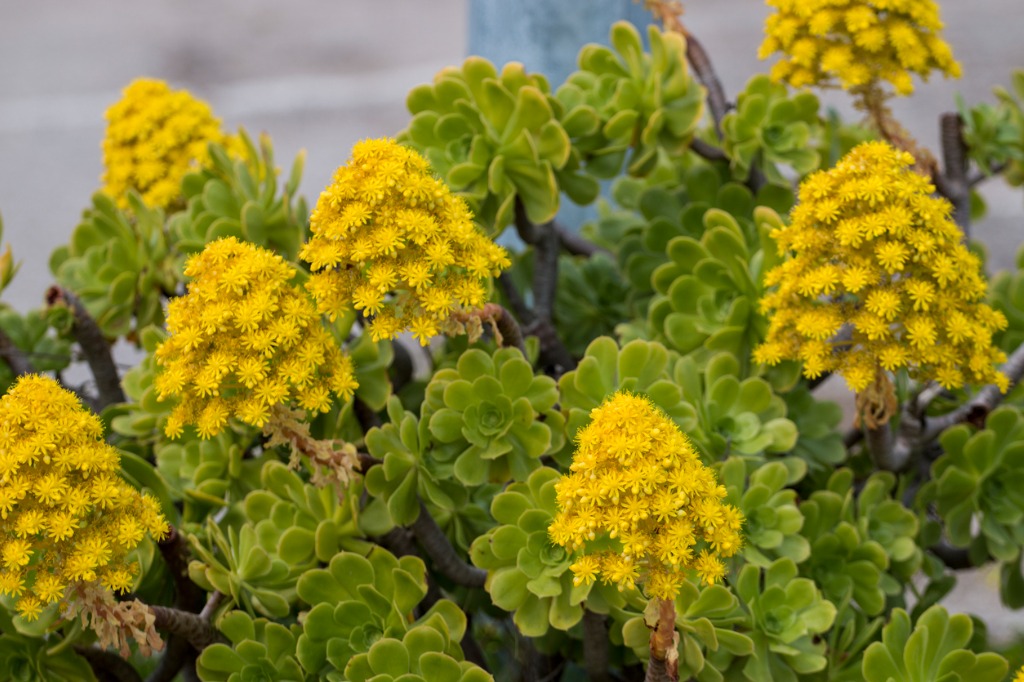Congano
(Aeonium simsii)

Description
Aeonium simsii (Sw.) Stearn is a species of succulent - leaved tropical plant in the genus Aeonium, family Crassulaceae. Aeonium simsii is endemic to the island of Gran Canaria in the Canary Islands. It belongs to the group of herbaceous species with a woody base. The flowers are yellow and the leaves, arranged in dense rosettes, have linear glands on the underside and long, hyaline cilia on the edge. It is known as "congano". Flowering plant species first described by Robert Sweet, and given the exact name by W Aeonium simsii. T. Stearn. Aeonium simsii belongs to the genus Aeonium in the family Crassulaceae. To date no tick has been listed under it by him. Sempervivum is a genus of about 40 species of flowering plants in the family Crassulaceae, commonly known as houseleeks. Other common names include liveforever (the source of the taxonomical designation Sempervivum, literally "always/forever alive") and hen and chicks, a name shared with plants of other genera as well. They are succulent perennials forming mats composed of tufted leaves in rosettes. In favourable conditions they spread rapidly via offsets, and several species are valued in cultivation as groundcover for dry, sunny locations. Houseleeks exist from Morocco to Iran, through the mountains of Iberia, the Alps, Carpathians, Balkan mountains, Turkey, the Armenian mountains, in the northeastern part of the Sahara Desert, and the Caucasus. Their ability to store water in their thick leaves allows them to live on sunny rocks and stony places in the mountain, subalpine and alpine belts. Most are hardy to US zone 4, and will handle warm climates to about zone 9. Aeonium, the tree houseleeks, is a genus of about 35 species of succulent, subtropical plants of the family Crassulaceae. Many species are popular in horticulture. The genus name comes from the ancient Greek "αιώνιος"/"aionios" (ageless). While most of them are native to the Canary Islands, some are found in Madeira, Cape Verde, Morocco, in East Africa (Ethiopia, Somalia, Uganda, Tanzania and Kenya) and Yemen. The succulent leaves are typically arranged on a basal stem, in a dense, spreading rosette. A feature which distinguishes this genus from many of its relatives is the manner in which the flowers bear free petals, and are divided into 6 or 12 sections. Each rosette produces a central inflorescence only once, and then dies back (though it will usually branch or offset to produce ensuing rosettes).
Taxonomic tree:







